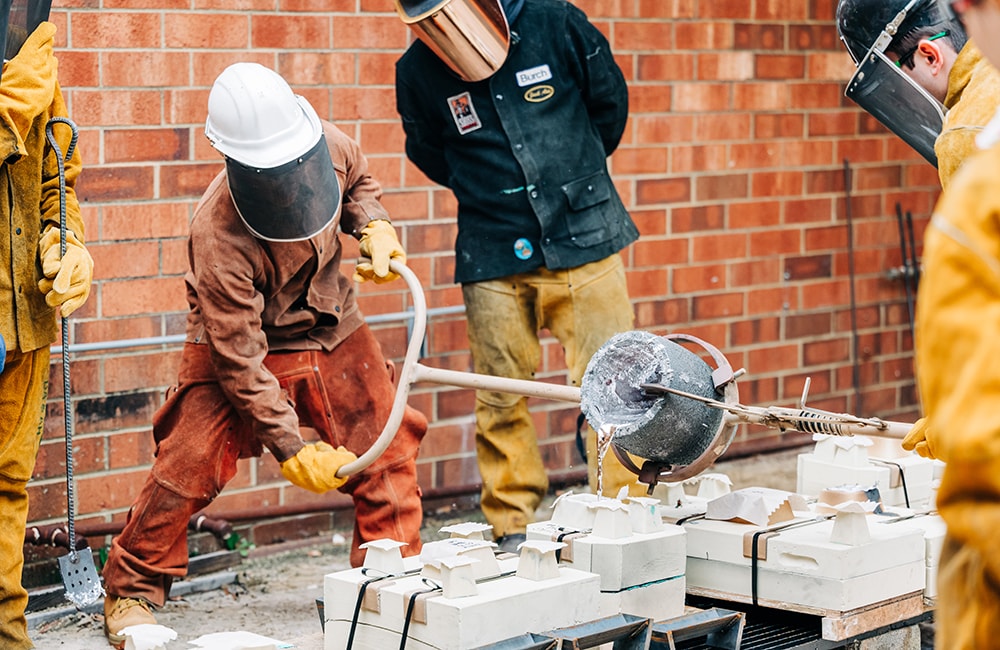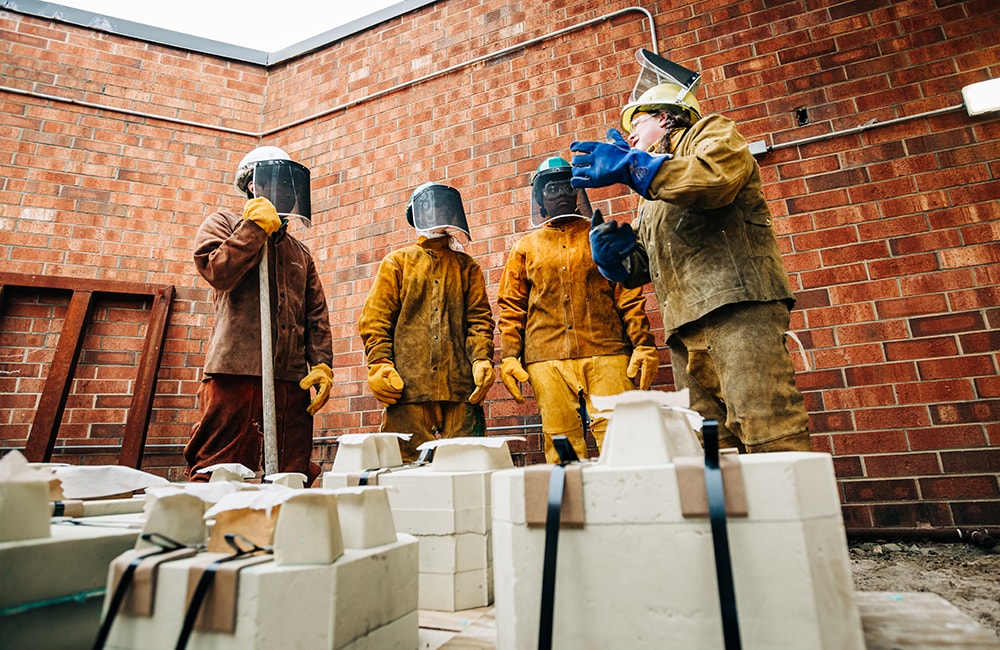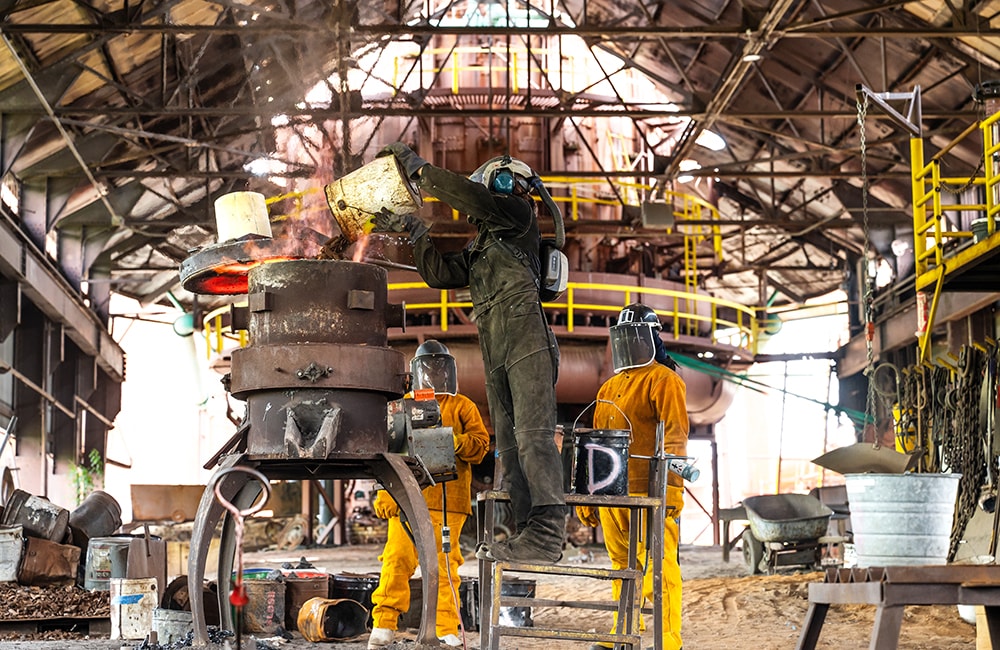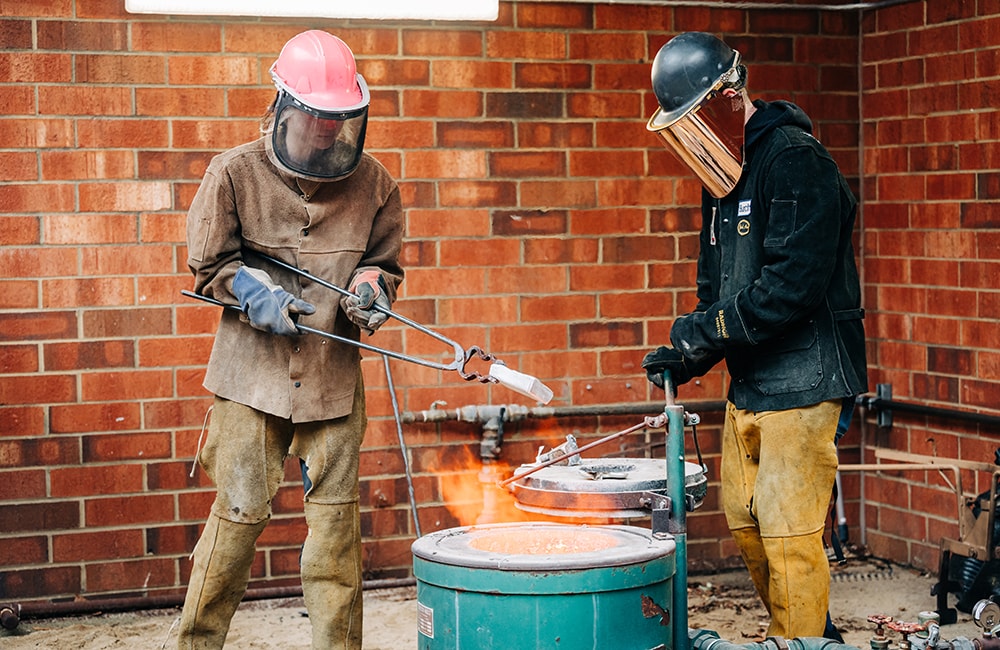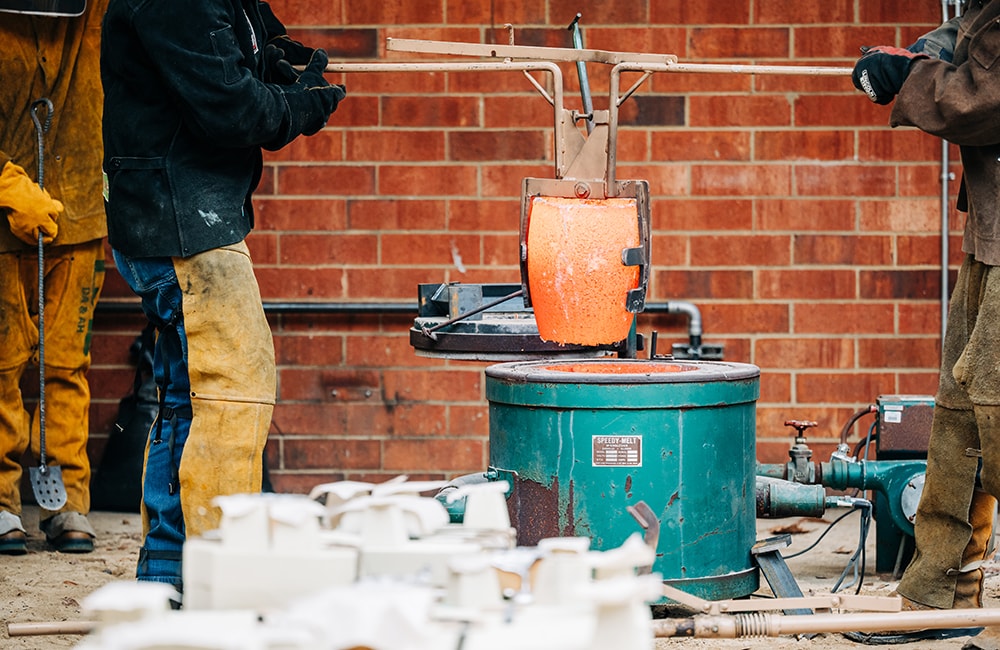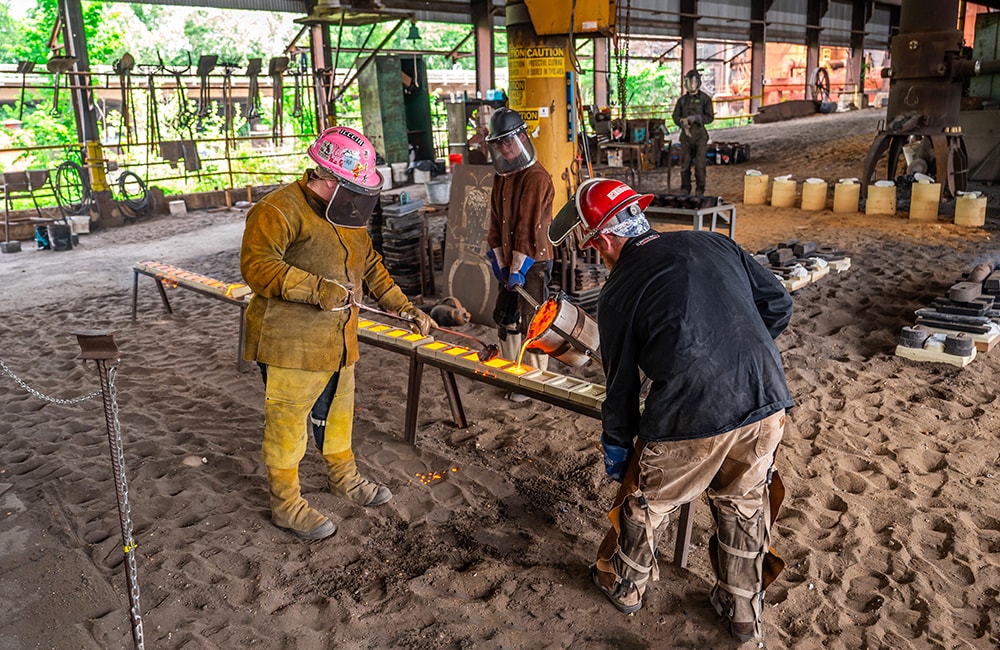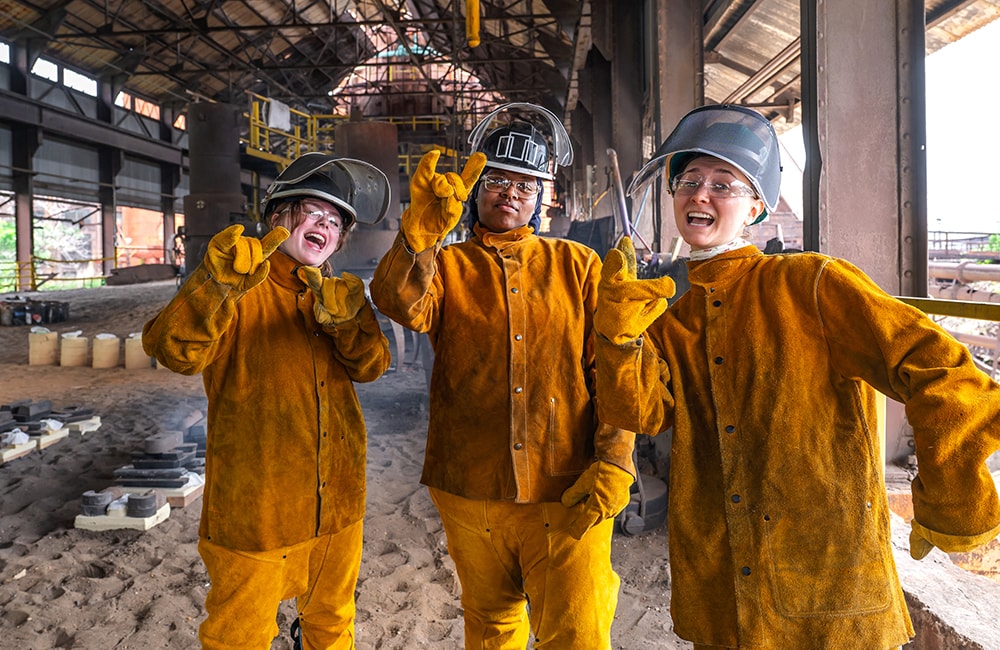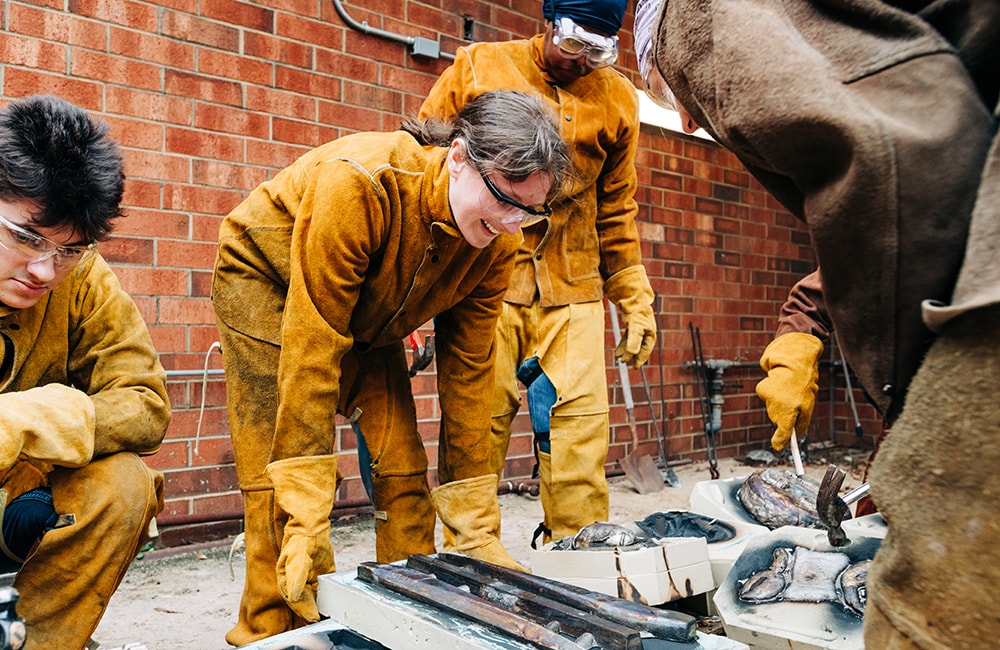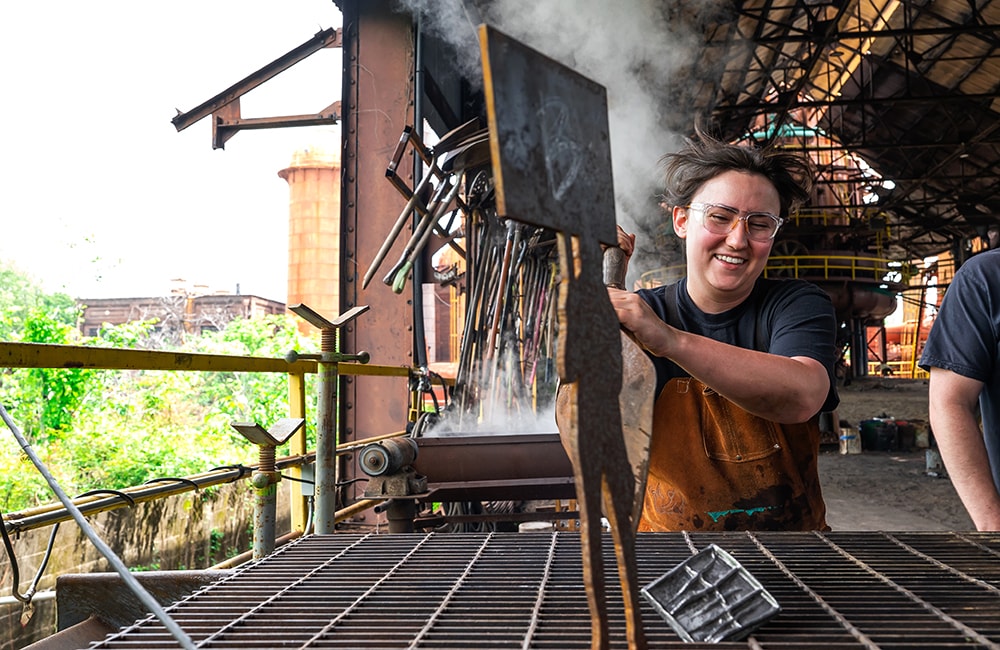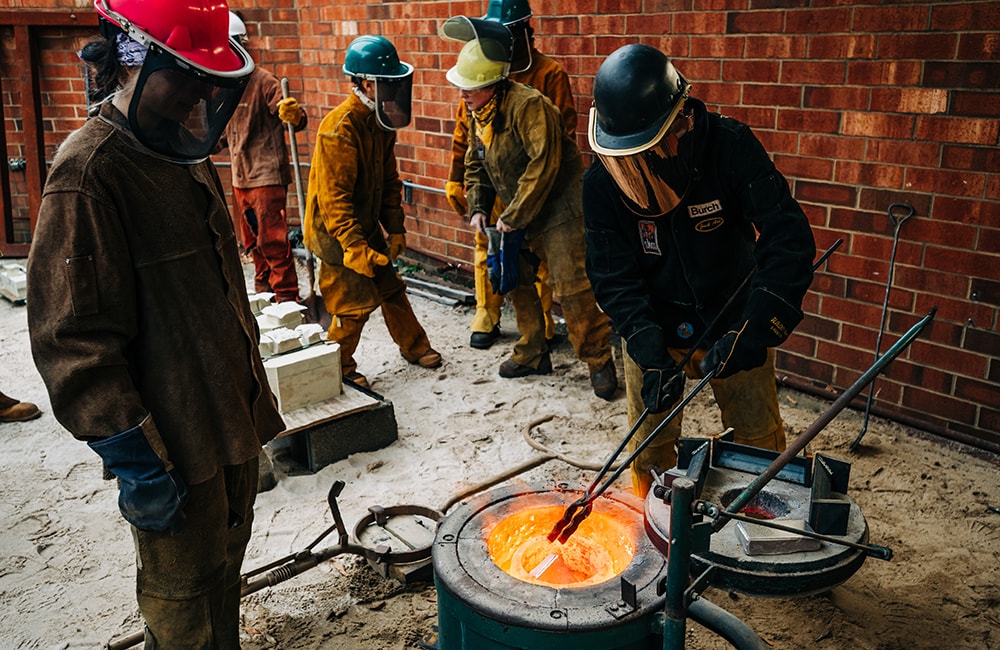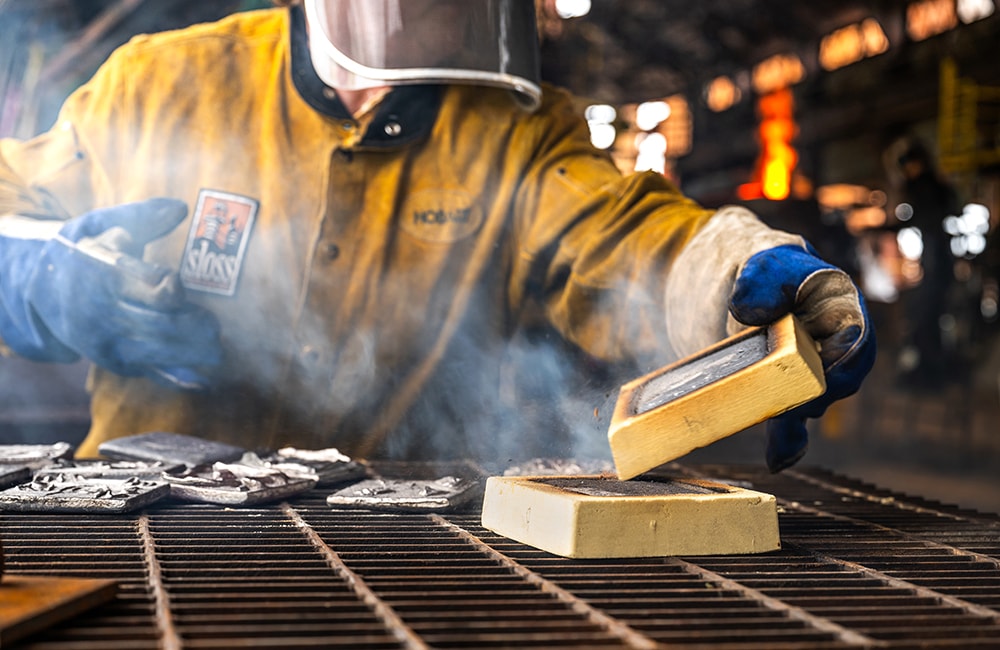
No two UAB classrooms are exactly alike. In this series, we take a deep dive into one course through the eyes of the instructor.
Things get heated in Stacey Holloway’s Metal Fabrication and Casting class, a special topics course in the Department of Art and Art History that is open to advanced undergraduate and graduate sculpture students, though “I offer overrides for interested students from other departments,” said Holloway, an associate professor of sculpture at UAB and a nationally known installation artist and sculptor.
UAB photographers Andrea Mabry and Jennifer Alsabrook-Turner captured two meetings of the class this spring — in the Hulsey Center’s sculpture courtyard and at Sloss Furnaces. We asked Holloway to describe the action and the unique thrills of working with red-hot, heavy metals.
Holloway, right, explains the process to her students in the sculpture courtyard. “For most of the assignments, the students either create a pattern — out of any material — or use an existing object to take a mold from,” Holloway said. The molds themselves, seen at the bottom of the photo, are made from resin-bonded silica sand.
Photo by Andrea Mabry
Preparing for the pour at Sloss Furnaces. “We usually average three or four metal pours during the semester,” Holloway said. The iron pour takes place at Sloss Furnaces, with the Sloss Metal Arts crew. Iron must reach 2,500 degrees Fahrenheit for a pour. The traditional iron furnace at Sloss shown here, called a cupolette, “uses coke and air to heat the metal,” Holloway said.
Photo by Jennifer Alsabrook-Turner
Pouring underway at Sloss. “We can pour all three metals [iron, aluminum and bronze] in the Hulsey sculpture courtyard,” Holloway noted. “However, we tend to take the students to Sloss in order to get them into the local art community and get them to think about ways to create metal sculpture once they are no longer in school.” The Sloss Metal Arts program does weekly scratch block iron pours for visiting schools.
Photo by Jennifer Alsabrook-Turner
Sloss Metal Arts Director Virginia Elliot sets out her iron sculpture, one of the many scratch block castings that Sloss Metal Arts casts for school visits, to cool. “Once the pieces are introduced to air — out of the mold — they cool within hours depending on the metal,” Holloway said.
Photo by Jennifer Alsabrook-Turner
Holloway (center, in yellow helmet) talks with a student while lab supervisor Page Burch loads an aluminum ingot into the Speedy-Melt. “It’s nice to do a deep dive on the subject of metal casting and show the students the many different ways that you can create cast metal art,” Holloway said. “One assignment is a lost wax method, where they either sculpt a piece out of wax or take a rubber mold off of a created pattern or existing object and pour it in wax. The wax is then gated and packed in a single resin-bonded sand mold that will then have the wax melted out.”
Photo by Andrea Mabry
More in this series
A visual guide to WLL125 - Eating in Birmingham: From Food Banks to Fine Dining: Students need to come hungry in this savory course led by instructor Jenna Reynolds, M.A. Follow Reynolds and her class on a tasty tour in this slideshow.
A visual guide to CJ350 - Advanced Criminalistics: From blood stains to DNA testing, students in this course learn the real-life workings of a crime lab. Get a glimpse into the class with its instructor, Associate Professor Jason Linville, Ph.D., in this slideshow.
Do you know a visually interesting course we should feature in this series? Let us know at
